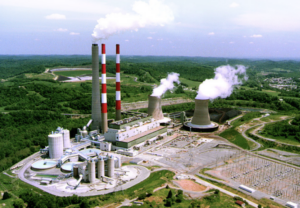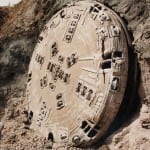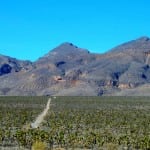The Nuclear Regulatory Commission (NRC) on May 6 released a final environmental impact statement (EIS) supplement for the proposed Yucca Mountain nuclear waste repository, a court-obligated finding that may revive the comatose project.
The final supplement evaluates the potential environmental impacts on groundwater and other impacts associated with the discharge of contaminated groundwater from the spent nuclear fuel and high-level radioactive waste at the proposed, but long-stalled repository at Yucca Mountain in Nye County, Nev.
Potential contaminant releases from the repository could be transported through the volcanic-alluvial aquifer in Fortymile Wash and the Amargosa Desert, and to the Furnace Creek/Middle Basin area of Death Valley, it notes, but radiological and other impacts over a one-million-year period on the aquifer environment and public health are “small,” it concludes.
A Small Impact
“The peak estimated annual individual radiological dose over the one-million-year period at any of the evaluated locations is 1.3 mrem [0.013 mSv],” the regulatory body said. “The NRC staff concludes that the estimated radiological doses are SMALL because they are a small fraction of the background radiation dose of 300 mrem/yr [3.0 mSv/yr] (including radon), and much less than the NRC annual dose standards for a Yucca Mountain repository in 10 CFR Part 63 {15 mrem [0.15 mSv] for the first 10,000 years, and 100 mrem [1 mSv] for one million years, after permanent closure}.”
The NRC said it issued the EIS supplement even though it had mostly adopted the Department of Energy’s (DOE’s) June 2008-issued EIS. One reason was that NRC staff found that the DOE’s EIS did not “adequately address potential repository-related impacts on groundwater and from surface discharges of groundwater.”
From Fanfare to Fate
Congress directed the DOE to build and operate a repository for used nuclear fuel and other high-level radioactive waste in 1982, when it passed the Nuclear Waste Policy Act. In 1987, it amended that law, directing the DOE to exclusively study the Yucca Mountain site as a potential repository for geologic disposal of used nuclear fuel. After two decades of study, the DOE delivered its license application for the facility (by truckload) to the NRC in 2008.
But, reflecting the Obama administration’s opposition to the politically contentious repository, the DOE in 2010 withdrew its June 2008–submitted application to license the facility from the NRC and moved to terminate the project. The NRC’s Atomic Safety and Licensing Board initially denied the motion, but under the direction of the commission, suspended the proceeding until there were sufficient funds (more than the then-unspent $11 million remaining in its Nuclear Waste Fund) to make “meaningful progress.”
Then, in a landmark decision, a three-judge panel of the U.S. Court of Appeals for the D.C. Circuit in August 2013 ruled that the NRC was legally required to comply with the Nuclear Waste Policy Act, a law passed by Congress in 1983 and which provides the NRC “shall consider” the DOE’s license application to store nuclear waste at Yucca Mountain.
The NRC has since published five volumes of its safety evaluation report on the facility. It essentially found that the DOE’s license application met regulatory requirements for the proposed repository—with two exceptions, that the DOE had failed to meet necessary requirements relating to ownership of land and water rights, and because the groundwater supplement to the DOE’s EIS had not been completed.
Last Rites for Yucca Mountain?
After the DOE declined to complete the supplement, it was deferred to the NRC. But the EIS supplement, done in compliance with the D.C. Circuit order, doesn’t change much, NRC spokesperson David McIntyre told POWER on May 6. “Aside from making some documents publicly available as the Commission directed, the staff does not envision any more Yucca-related work—unless Congress appropriates additional funds and directs us to continue,” he said.
The Nuclear Waste Fund has been substantially depleted, McIntyre noted. The NRC’s latest monthly status report to Congress on its licensing actions for Yucca Mountain shows that about $1.38 million remains unspent.
However, the Nuclear Energy Institute (NEI) told POWER that advancement of the EIS is a “positive step,” noting that the NRC yet has to adjudicate contentions.
“The big picture take on this is that it is yet another independent expert study that has found the proposed repository to be safe and environmentally sound,” NEI nuclear expert Rod McCullum explained.
“While it is based on the same body of scientific and technical evidence that supported NRC’s 2015 Safety Evaluation Report that also confirmed the safety of the proposed repository, it is unrelated to the reason that staff’s recommendation stopped short of calling for construction authorization. The recommendation not to authorize was based entirely on the fact that DOE has yet to obtain certain land withdrawal and water rights, which stems entirely from political factors involving Congress and the State of Nevada (legislation and/or State approval would be required to address those issues), and not any scientific or technical concern,” he said.
—Sonal Patel, associate editor (@POWERmagazine, @sonalcpatel)









